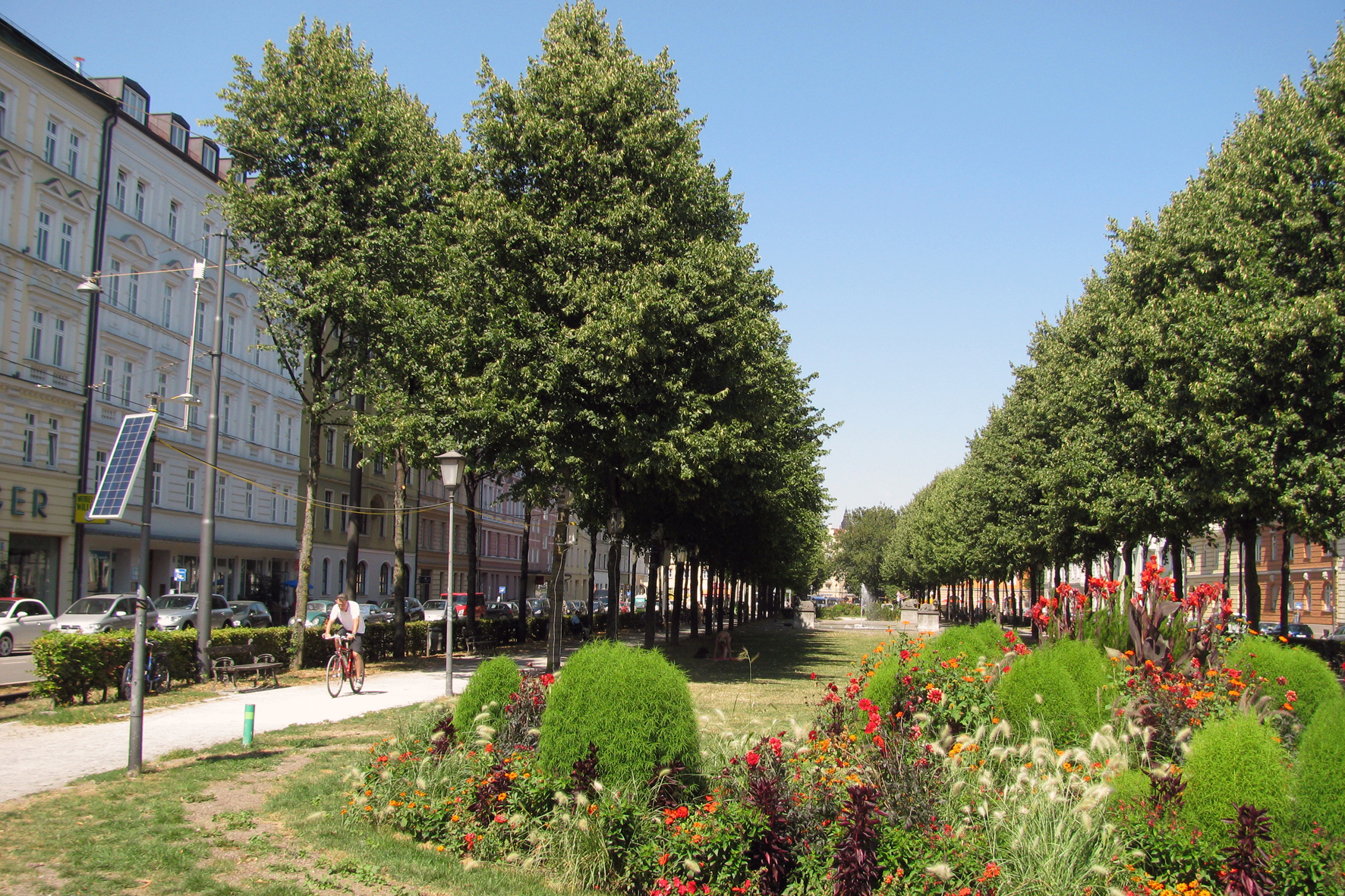Small-Leaved Limes Can Cool Urban Squares Like Air Conditioning Units
Trees Transpire for a Cool City

Street canyons, roads, and squares get particularly hot in summer. Trees cool the asphalt under their crowns by up to 20 °C and the air by up to two degrees Celsius as demonstrated by studies conducted by Mohammad Rahman from the Chair for Strategic Landscape Planning and Management of TUM. The latest findings by the plant ecologist prove that small-leaved limes (Tilia cordata), which are particularly common in cities, are able to cool their surroundings to different degrees depending on their growth conditions.
Urban trees growing in open green squares provide an optimal cooling effect on summer days compared to narrow and paved squares. The cooling power of these ‘green air conditioners’ is at least 20 percent lower on narrow, paved squares with small cut-out pits for trees. These were the results of Rahman’s measurements for small-leaved limes on two squares in the heart of Munich: the green Bordeaux Platz and the paved Pariser Platz. “Local meteorological conditions vary greatly and affect how the trees transpire,” the researcher explained.
Cooling Effect from Trees is comparable to that of an Air Conditioner
The plants release water vapor when they absorb carbon dioxide for photosynthesis via their stomata. At Bordeaux Platz, the researchers measured a sap flow rate of up to eight liters per hour in the vascular system of a tree. In terms of energy loss, this means that the small-leaved lime achieves a cooling power of up to 2.3 kilowatts. “The trees’ output is comparable to that of an air conditioner for a single room,” said the plant ecologist.
Rahman’s measurements show that small-scale differences in climate cause the plants to transpire in different ways. Wind blows across open green spaces at a higher speed, the air is less saturated with water, and the trees are exposed to more sunlight as compared to a narrow paved square that is surrounded by buildings on all sides. Furthermore, the ground of the green spaces at Bordeaux Platz is cooler and can retain soil moister longer than the completely covered Pariser Platz. “These conditions influence transpiration and hence the trees’ cooling effect,” said the plant ecologist. In order to measure all these parameters, he and five other researchers installed around 80 sensors on ten trees and couple of weather stations in downtown Munich in the summer of 2015.
“In order to reduce the amount of heat in cities, it would make sense to create more open spaces and squares—this would allow us to directly influence the cooling potential of the trees,” Rahman recommends. In addition, the plant ecologist advises that more grass lawns might have added benefit in terms of reducing the effect of ground heat storage and increase boundary layer cooling compared to those planted in narrow paved squares.
Publication:
Rahman, M.: Comparing the cooling benefits of different urban tree species at contrasting growth conditions. In: Gesellschaft für Ökologie e.V. (ed.): Verhandlungen der Gesellschaft für Ökologie 46. Jahrestagung der Gesellschaft für Ökologie, 5.-9. Sep. 2016 in Marburg. Görich & Weiershäuser, Marburg, pp. 367-368
Contact:
Technical University of Munich
Chair for Strategic Landscape Planning and Management
Dr. Mohammad Asrafur Rahman
Emil-Ramann-Str. 6
85354 Freising, Germany
Tel.: +49 8161 714662
E-mail: ma.rahman@tum.de